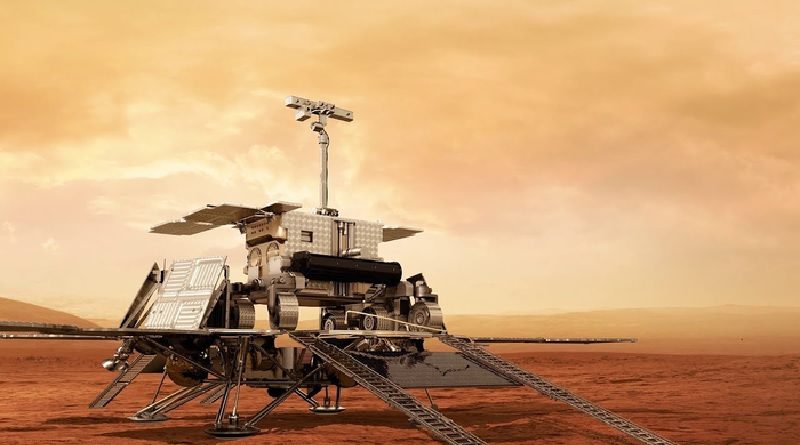EXOMARS RADIO SCIENCE INSTRUMENT READIED FOR MARS 2020
An ambitious instrument for ESA’s ExoMars 2020 mission has passed its testing in conditions resembling those on the Red Planet. It will now be transported to Russia for its acceptance review, followed by integration onto the Kazachok Surface Platform, scheduled for launch this time next year.
At about 8 x 8 x 20 cm plus a trio of antennas, ESA’s Lander Radioscience experiment – LaRa is a bit bigger than a 1-litre milk carton. But it functions as a high-performing transponder, tasked with maintaining an extremely stable direct radio-frequency link between Earth – Mars for a full martian year, two Earth years, once ExoMars has touched down.
Proposed by the Royal Observatory of Belgium, LaRa has been developed through ESA’s PRODEX programme, focused on developing science experiments for space, and funded by the Belgian Space Policy Office.
“The instrument’s surfaces are regularly swabbed to check its ‘bioburden’ levels remain acceptable – explains to Spazio-News Magazine Lieven Thomassen of LaRa prime contractor Antwerp Space -. Its interior, made up of four levels of circuit boards, has already undergone full cleaning. It is all but fully sealed away from the outside world, with only a 2 mm diameter venting hole to avoid over-pressurising once LaRa reaches space.”
The latest testing of LaRa took place in ESA’s Mechanical Systems Laboratory – MSL at the Agency’s ESTEC technical heart in Noordwijk, the Netherlands. This is a small-scale version of the adjacent ESTEC Test Centre, able to perform a wide range of space-simulating tests, but serving spacecraft instruments, subsystems or mini-satellites rather than full-size missions.
Following vibration testing on one of the MSL shaker to simulate the harsh conditions of launch, atmosphere re-entry, descent and Mars landing, LaRa was then placed inside a thermal vacuum chamber for nearly two weeks to perform functional testing in hot and cold conditions.
It was at first placed in high vacuum to ‘outgas’ fumes that might otherwise pose problems in space and to test its behaviour in conditions similar to that of the voyage to Mars. LaRa was then subjected to simulated martian conditions, with 6 millibars of carbon dioxide added to the chamber, at the same time as the temperature was cycled up and down.
LaRa’s electronic box will be kept warm by the ExoMars lander’s heater. LaRa’s antennas however are installed outside of this thermally controlled environment and will have to endure extreme temperature cycling: nights as cold as -90°C, with daytime reaching up to a relatively comfortable 10°C. The resulting novel antenna design was developed in cooperation between ESA – Université Catholique de Louvain.
At the end of testing the thermal vacuum chamber was opened. Engineers approached the instrument wearing mouth masks, gowns and sterile gloves, resembling a hospital surgical team, then proceeded to remove the sensors and cabling fitted for the testing before placing the instrument and its antennas into sterile bags.
Like all hardware designed for interplanetary missions, LaRa is subject to strict planetary protection protocols to prevent microbial contamination.
LaRa is one of two ESA instruments on the Russian-built ExoMars Surface Platform. Known as Kazachok, the platform’s first role is to get itself and the ESA-made Rosalind Franklin ExoMars rover safely down to the Oxia Planum lowlands on Mars.
Then, once the rover drives off its ramps, Kazachok will devote itself to running a total of 13 experiment packages aboard. The Surface Platform was developed by NPO Lavochkin under Roscosmos contract, in partnership with ESA.

